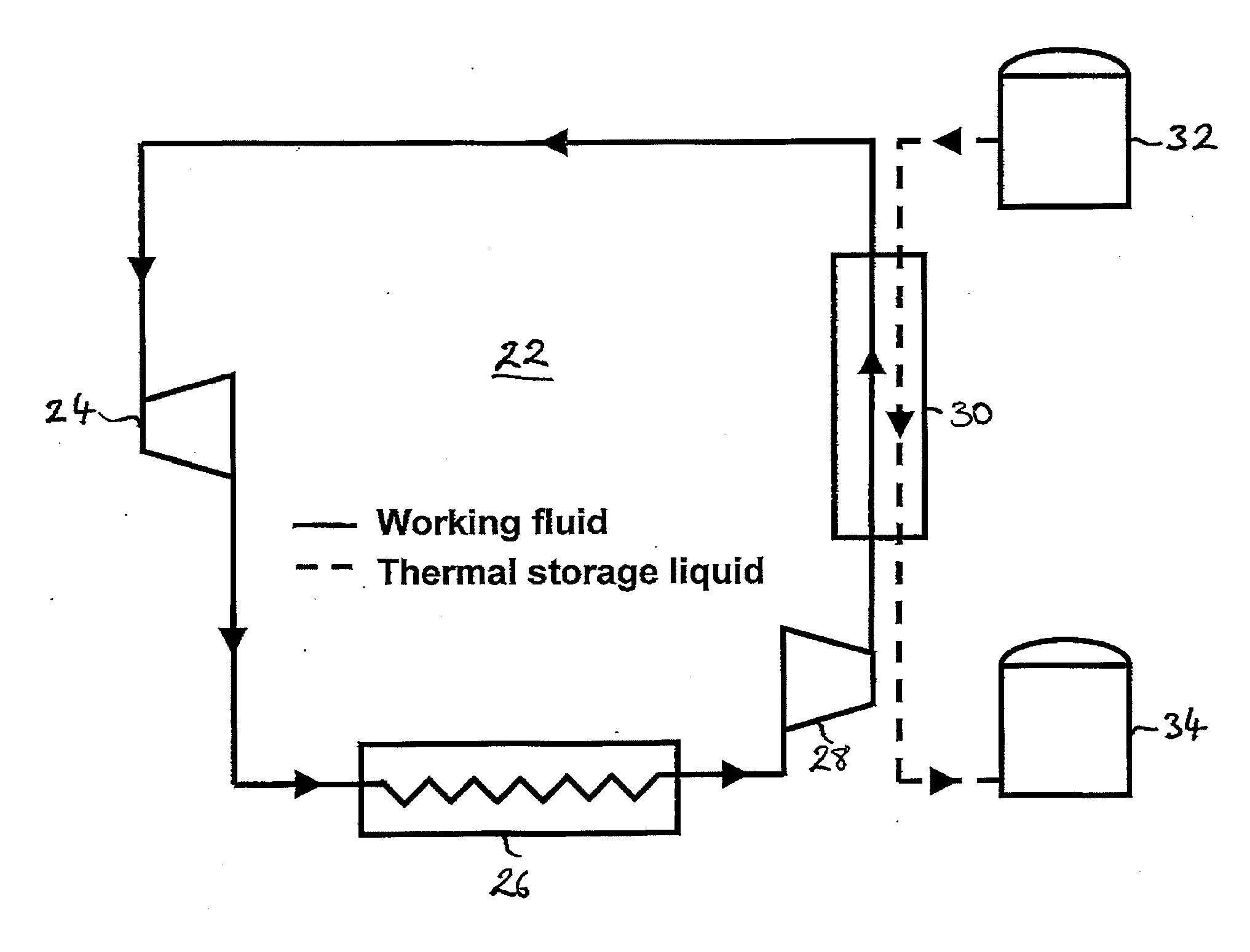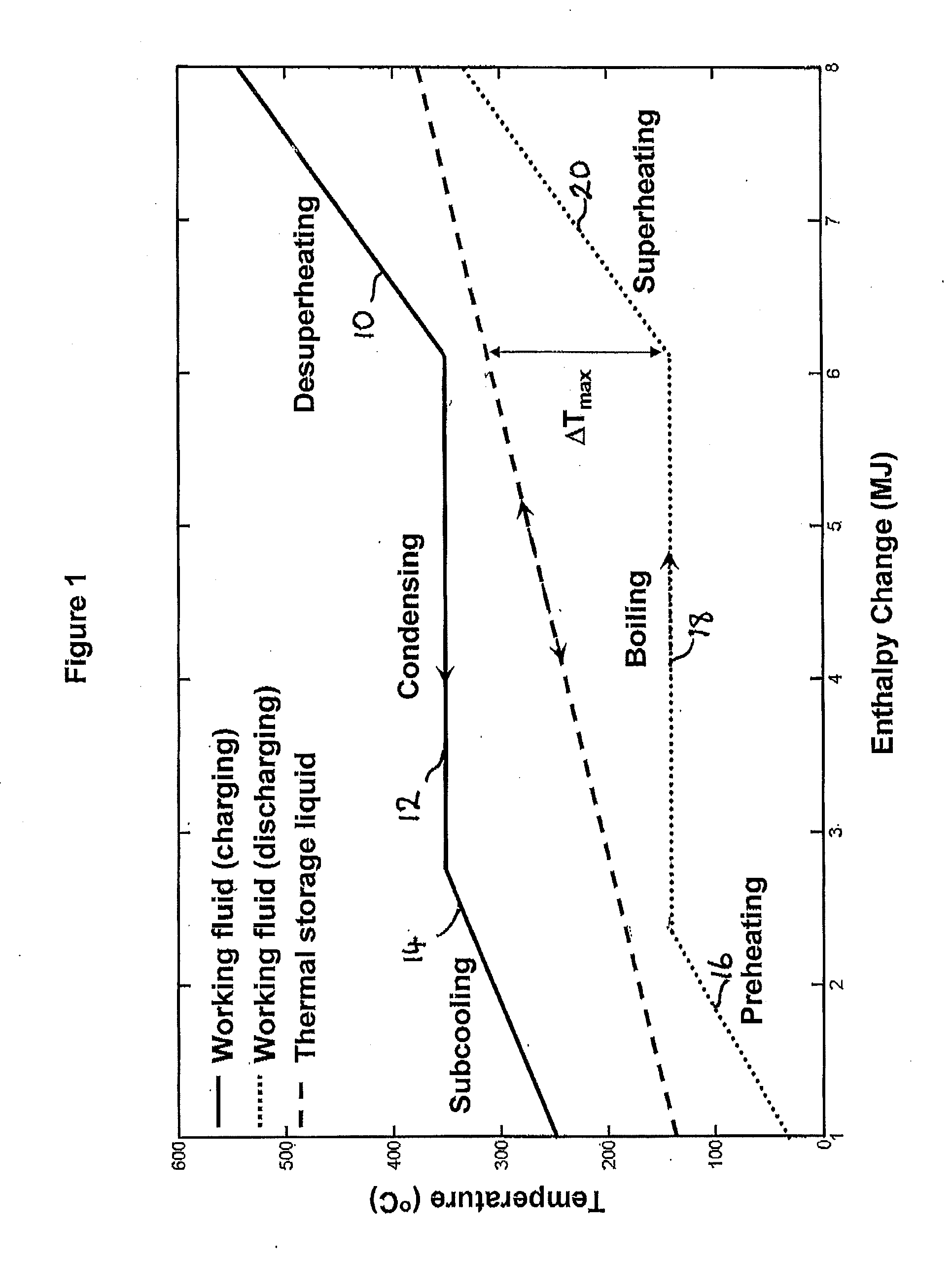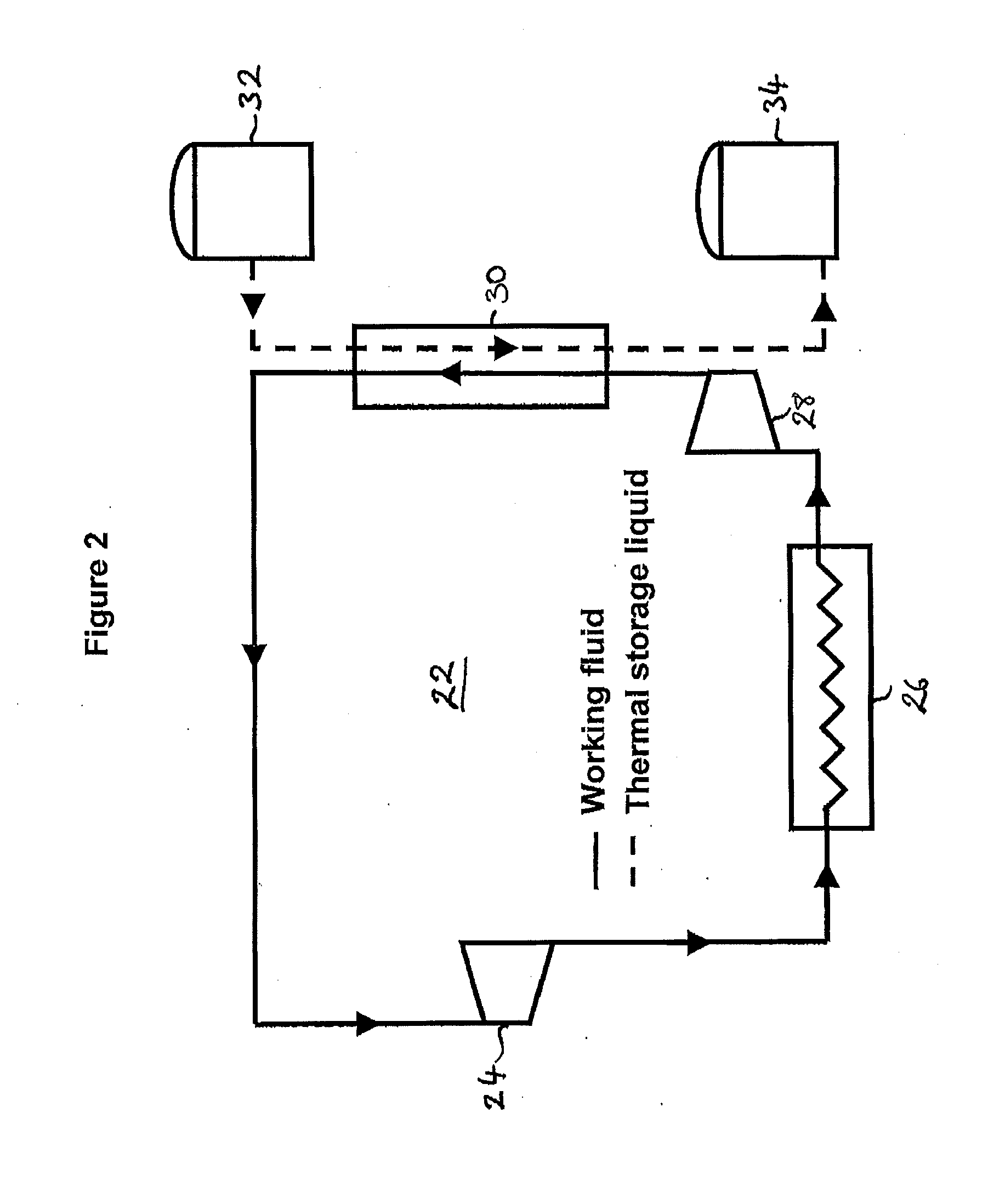Thermoelectric energy storage system and method for storing thermoelectric energy
a thermoelectric energy and storage system technology, applied in the field of electric energy storage, can solve the problems of limited thermoelectric energy storage efficiency, loss of rest of electrical energy, and inherently limited round-trip efficiency of all electric energy storage technologies,
- Summary
- Abstract
- Description
- Claims
- Application Information
AI Technical Summary
Benefits of technology
Problems solved by technology
Method used
Image
Examples
Embodiment Construction
[0022]A thermoelectric energy storage system is disclosed herein for converting electrical energy into thermal energy to be stored and converted back to electrical energy with an improved round-trip efficiency.
[0023]According to a first exemplary aspect of the disclosure, a thermoelectric energy storage system is provided which comprises a heat exchanger which contains a thermal storage medium, a working fluid circuit for circulating a working fluid through the heat exchanger for heat transfer with the thermal storage medium, and wherein the working fluid undergoes a transcritical process during heat transfer.
[0024]In an exemplary embodiment the thermal storage medium is a liquid. In a further exemplary embodiment the thermal storage medium is water.
[0025]The working fluid undergoes a transcritical cooling in the heat exchanger during a charging cycle of the thermoelectric energy storage system. When the thermoelectric energy storage system is in a charging (or “heat pump”) cycle, t...
PUM
 Login to View More
Login to View More Abstract
Description
Claims
Application Information
 Login to View More
Login to View More - R&D
- Intellectual Property
- Life Sciences
- Materials
- Tech Scout
- Unparalleled Data Quality
- Higher Quality Content
- 60% Fewer Hallucinations
Browse by: Latest US Patents, China's latest patents, Technical Efficacy Thesaurus, Application Domain, Technology Topic, Popular Technical Reports.
© 2025 PatSnap. All rights reserved.Legal|Privacy policy|Modern Slavery Act Transparency Statement|Sitemap|About US| Contact US: help@patsnap.com



